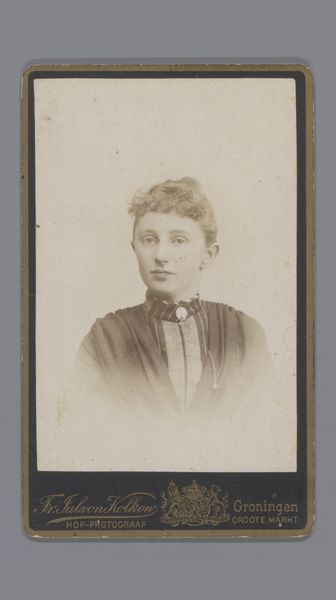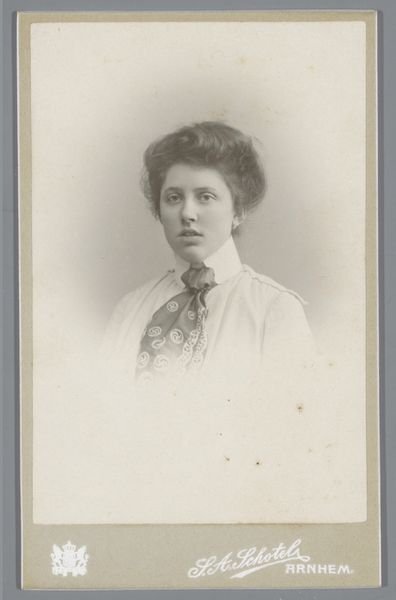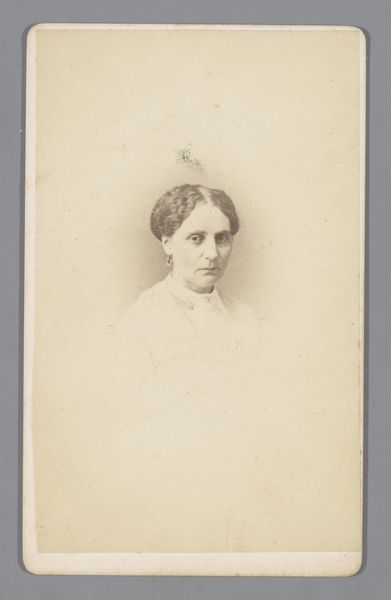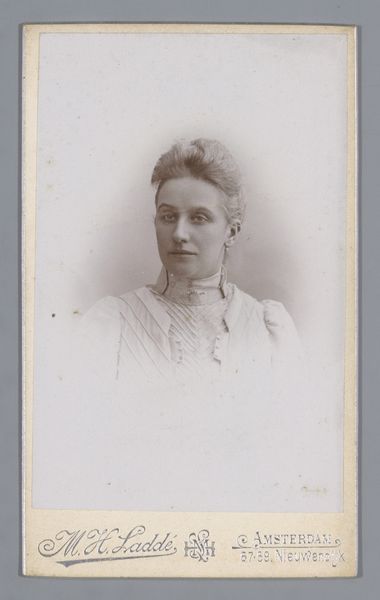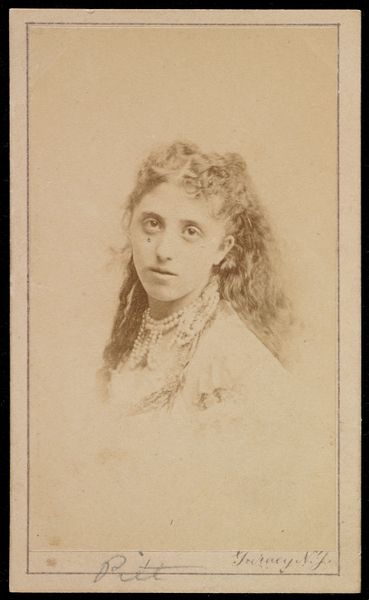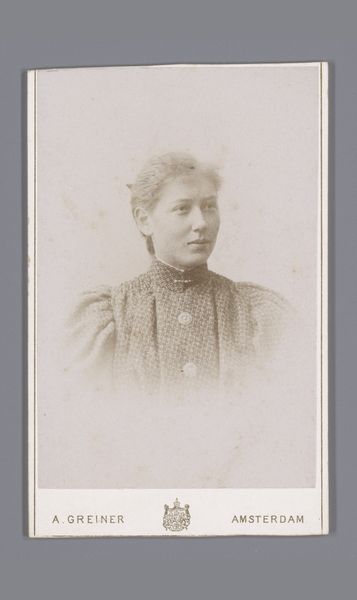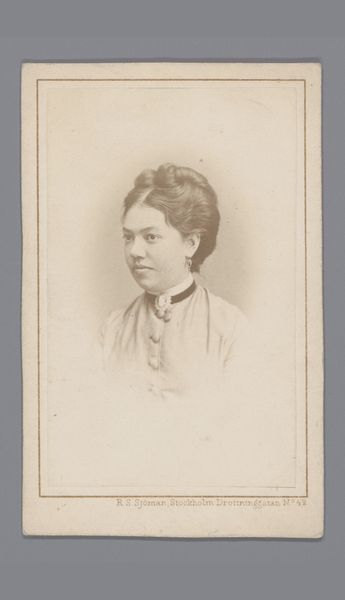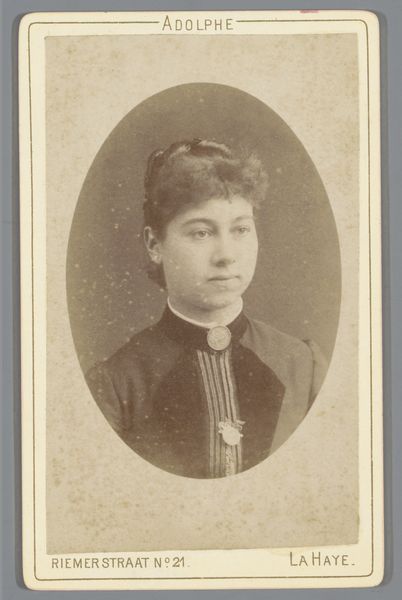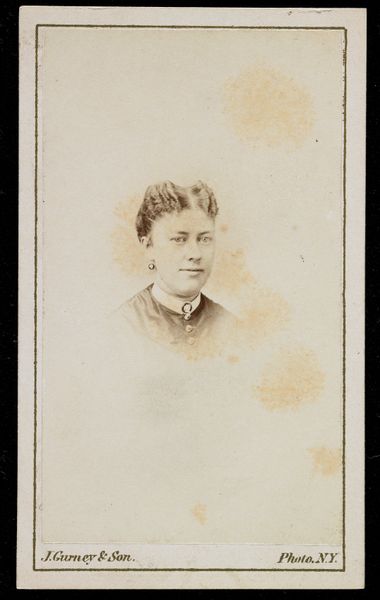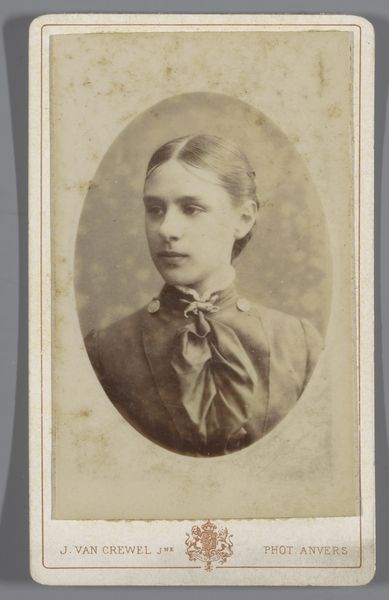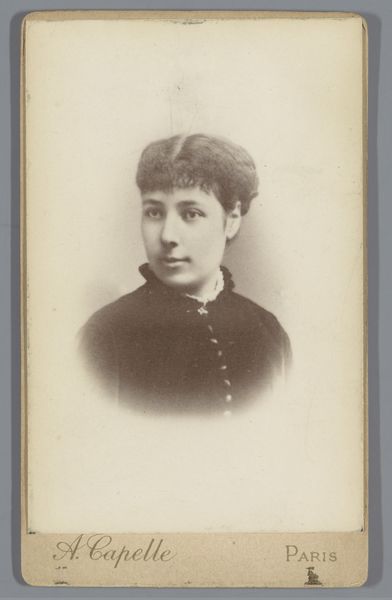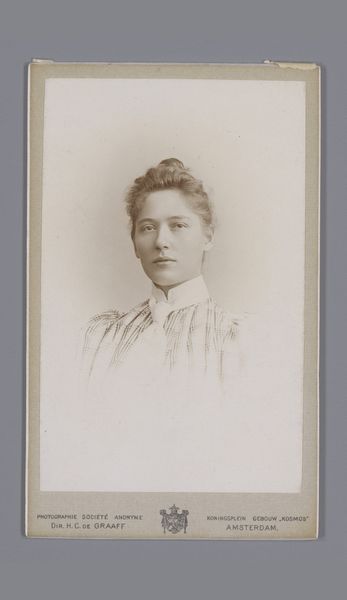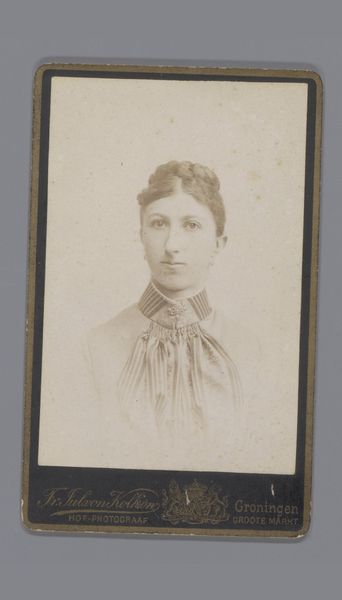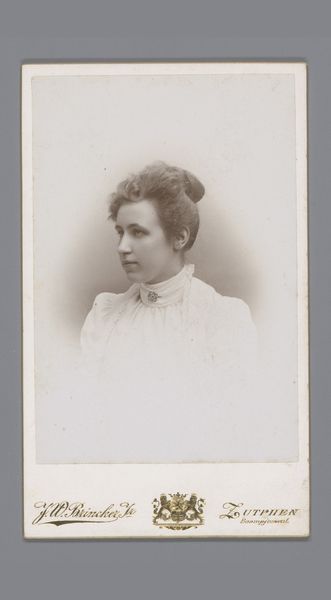![Untitle [portrait of an unidentified woman] by Jeremiah Gurney](/_next/image?url=https%3A%2F%2Fd2w8kbdekdi1gv.cloudfront.net%2FeyJidWNrZXQiOiAiYXJ0ZXJhLWltYWdlcy1idWNrZXQiLCAia2V5IjogImFydHdvcmtzLzgyZTg4NjZjLWY1NDItNGEyMS04MjE5LTA1YTg5ZjMxZDlkYi84MmU4ODY2Yy1mNTQyLTRhMjEtODIxOS0wNWE4OWYzMWQ5ZGJfZnVsbC5qcGciLCAiZWRpdHMiOiB7InJlc2l6ZSI6IHsid2lkdGgiOiAxOTIwLCAiaGVpZ2h0IjogMTkyMCwgImZpdCI6ICJpbnNpZGUifX19&w=3840&q=75)
Untitle [portrait of an unidentified woman] 1869 - 1874
0:00
0:00
photography, albumen-print
#
portrait
#
16_19th-century
#
photography
#
united-states
#
portrait art
#
albumen-print
Dimensions: 3 3/4 x 2 1/4 in. (9.53 x 5.72 cm) (image)4 1/8 x 2 1/2 in. (10.48 x 6.35 cm) (mount)
Copyright: Public Domain
Curator: The first thing that strikes me about this portrait is its intimacy. There's a softness, almost a faded quality that brings to mind old memories and whispers of a bygone era. Editor: That's fitting, considering we're looking at an albumen print photograph made sometime between 1869 and 1874 by Jeremiah Gurney, a prominent New York photographer. This "Untitled [portrait of an unidentified woman]" captures a specific historical moment through its delicate materiality. Curator: Exactly, there’s such intentionality in capturing her image using emerging photographic processes of the time. It reminds me of a Pre-Raphaelite painting; look at how the soft focus around the edges almost venerates her, idealizing the sitter while subtly reminding you of death, a "memento mori" vibe. Editor: Absolutely, photography during this period was as much about creating a lasting legacy as it was about documentation. It's a poignant reminder of the democratizing impulse of early photography to capture the likenesses of broader portions of society, not just the elite, although accessing such portraiture was still not cheap. Who got to be represented and how became a crucial site of social and political negotiation. Curator: I'm drawn to the deliberate lack of ornate background or props, placing the sitter in near complete abstraction. By paring down the elements to solely her personhood, the photo amplifies a symbolic resonance—a modern Eve gazing serenely at some unknown, post-lapsarian world, pregnant with a quiet dignity. Editor: Or maybe the minimal presentation reveals more pragmatic social considerations of photography at the time—its industrial, financial considerations meant optimizing process through neutral staging. The very act of capturing her image within Gurney's studio implicated her, and photography's relationship to societal power structures. The democratization of portraiture carried profound weight within prevailing artistic discourses of the 19th century, changing visual culture permanently. Curator: It’s this tension between her individual presence and its greater place within culture-historical forces that resonates the most! It’s like a silent dialogue spanning across generations of viewers. Editor: A powerful piece, it provokes us to ponder how portraiture shapes historical memory and consider who has agency over constructing representation.
Comments
No comments
Be the first to comment and join the conversation on the ultimate creative platform.
